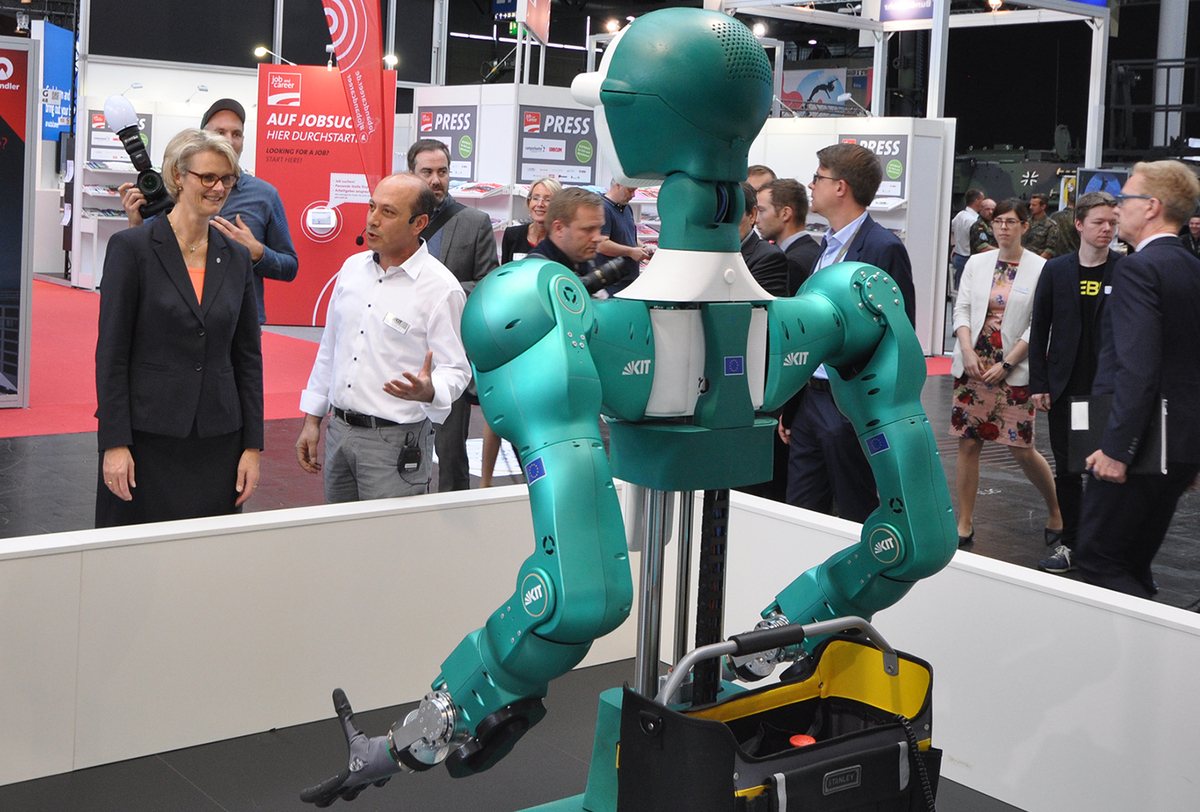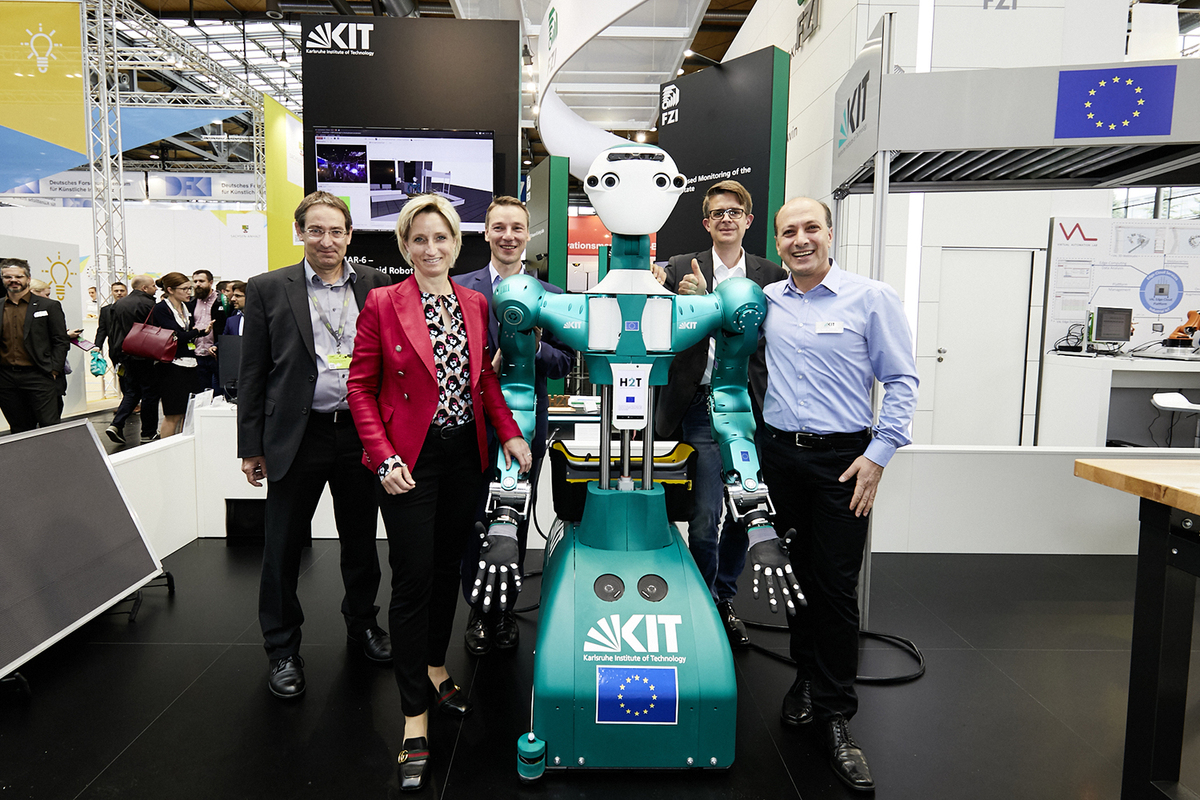KIT to showcase self-learning humanoid robot at CEBIT
At their joint booth at CEBIT in Hanover (Hall 27, booth G52) from June 12 to 15, Karlsruhe Institute of Technology (KIT) and FZI Research Center for Information Technology at the Karlsruhe Institute of Technology will showcase an assistant robot for the industry that can learn to use tools by watching its human colleagues, a test center for autonomous driving, an electronic wallet that cannot be cracked by data thieves, a certification system for reliable cloud services, and other highly exciting research and startup projects.
ARMAR Assistant Robot: Number 6 is Learning
It’s normal for robots to be used in factories and warehouses these days. They carry out a variety of tasks such as picking, welding and assembling. But they are mostly specialized to perform a specific task and are separated from people by cages or barriers. ARMAR-6, however, can work together directly with its human colleagues. The youngest member in the family of humanoid robots based at KIT does not focus on a specific activity but can, for example, learn how to use new tools by observing people.
With its arms resembling human limbs, ARMAR-6 can literally give its colleagues a hand with a hammer or drill, pass them tools or assist in any other way. This works not only with a few preprogrammed tools; thanks to its artificial intelligence, the robotic aid is able to continuously improve its capabilities – through observation, linguistic instruction or from its own experience. That means that without additional programming it can be used in a variety of environments and can support people in their difficult and highly stressful tasks.
Full Text: Press Release 062/2018
mex/ jf, 22.05.2018





